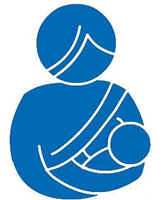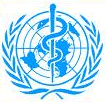Half
of Children Born to HIV Positive Mothers Do Not Receive Preventive Antiretroviral
Drugs
 |
 |
 |
 |
 |
 |
 |
| SUMMARY:
Only
about half of babies born to HIV positive mothers in 4 African
countries received at least a minimum preventive dose of nevirapine
(Viramune) immediately after birth to reduce the risk
of mother-to-child transmission, according to a study in the
July
21, 2010 Journal of the American Medical Association,
a special HIV/AIDS issue coinciding with the XVIII International
AIDS Conference (AIDS 2010) last
month in Vienna. The World Health Organization (WHO) has released
new guidelines recommending that all women with HIV should
receive antiretroviral drugs to protect against HIV transmission
during pregnancy, delivery, or breastfeeding, and that diagnostic
testing should be expanded for infants to enable those infected
to receive prompt treatment. |
|
 |
 |
 |
 |
 |
 |
 |
By
Liz Highleyman
 Maternal
use of antiretroviral
drugs during pregnancy, delivery, and breast-feeding, and treatment
of infants soon after birth, is proven effective in preventing mother-to-child
HIV transmission. Nevertheless, according to WHO, approximately 400,000
infants each year still acquire HIV via vertical transmission.
Maternal
use of antiretroviral
drugs during pregnancy, delivery, and breast-feeding, and treatment
of infants soon after birth, is proven effective in preventing mother-to-child
HIV transmission. Nevertheless, according to WHO, approximately 400,000
infants each year still acquire HIV via vertical transmission.
Elizabeth Stringer from the Centre for Infectious Disease Research in
Zambia and colleagues with the PEARL study team estimated the extent
of coverage of existing services to prevent mother-to-child HIV transmission
in Cameroon, Cote d'Ivoire, South Africa, and Zambia.
Between June 2007 and October 2008, they collected umbilical cord blood
samples from 43 randomly selected facilities providing childbirth services.
All sites used at least single-dose nevirapine to prevent mother-to-child
transmission; some sites also used additional antiretroviral drugs for
prophylaxis.
The researchers determined whether women took nevirapine by measuring
drug levels in cord blood at the time of delivery, and directly observed
whether infants received the recommended dose after birth.
Results
 |
Out
of 27,893 tested cord blood specimens, 3324 (12%) were found to
be HIV seropositive. |
 |
Looking
at 3196 seropositive mother-infant pairs who underwent cord blood
nevirapine measurement: |
| |
 |
1845
mothers took nevirapine; |
 |
1725
HIV-exposed infants received total coverage (that is, both
mother and baby received the drug). |
|
 |
Total
coverage rates varied substantially by country and by site within
a country, however, ranging from 0% to 82%. |
 |
In
an adjusted analysis, the overall average level of coverage for
the 4 countries was estimated to be 51%. |
 |
Maternal
non-adherence -- assumed based on absence of nevirapine in the cord
blood from women who had the drug dispensed to them before delivery
-- was common. |
 |
Factors
significantly associated with failure to achieve total nevirapine
coverage included: |
| |
 |
Maternal
age less than 20 years: adjusted odds ratio (aOR) 1.44 vs
> 30 years; |
 |
Maternal
age between 20 and 25 years: aOR 1.28 vs > 30 years; |
 |
None
or only 1 prenatal care visit: aOR 2.91 vs > 6 visits; |
 |
2
or 3 prenatal care visits: aOR 1.93 vs > 6; |
 |
4
or 5 prenatal visits: aOR 1.56 vs > 6; |
 |
Vaginal
(as opposed to Cesarean) delivery: aOR 1.22; |
 |
Low
infant birth weight (< 2500 g): aOR 1.34 vs >
3500 g. |
|
These
findings led the study authors to conclude, "In this random sampling
of sites with services to prevent mother-to-child HIV transmission,
only 51% of HIV-exposed infants received the minimal regimen of single-dose
nevirapine."
The study also analyzed the path or "cascade" that mothers
and infants must negotiate to prevent vertical HIV transmission, from
being offered an HIV test during pregnancy, to dispensing nevirapine,
to ensuring that both mother and baby take the drug as directed.
"Our findings indicate that programmatic failures are common along
this path, and that each clinic faces its own mix of challenges in maximizing
service coverage," the researchers wrote.
WHO
Guidelines
 In
November 2009, WHO issued revised
international guidelines recommending earlier antiretroviral therapy
(ART) for HIV positive adults (starting at 350 rather than 200 cells/mm3),
more extensive therapy during pregnancy, and continuation of treatment
for mothers and/or babies during breast-feeding to prevent vertical
HIV transmission.
In
November 2009, WHO issued revised
international guidelines recommending earlier antiretroviral therapy
(ART) for HIV positive adults (starting at 350 rather than 200 cells/mm3),
more extensive therapy during pregnancy, and continuation of treatment
for mothers and/or babies during breast-feeding to prevent vertical
HIV transmission.
The new guidelines released last month recommend that all women with
HIV should receive antiretroviral drugs to protect against HIV transmission
during pregnancy, delivery, or breast-feeding. WHO indicated that mothers
may safely breast-feed provided that they or their infants receive antiretroviral
drugs during the breast-feeding period.
"We know what to do," said Jimmy Kolker, UNICEF's Chief of
HIV and AIDS. "Ending transmission of HIV from mothers to children
is entirely achievable and must be a priority."
"Virtual elimination of mother to child transmission of HIV by
2015 is possible," UNAIDS Deputy Executive Director Paul De Lay
added in a WHO press release. "Relatively small investments can
go a long way in saving mothers and babies."
Turning to children that do become HIV-infected, WHO noted that 355,000
children were receiving life-saving ART at the end of 2009, compared
with 276,000 at the end of 2008.
Until now, few babies under 1 year of age have started treatment, in
part because the type of HIV testing needed for this group has not been
available in many settings. WHO called for greater access to infant
diagnosis starting at 4-6 weeks after birth.
Without diagnosis followed by prompt initiation of treatment, an estimated
one-third of HIV-infected infants will die before their first birthday,
and about half will die before reaching 2 years of age, according to
the organization.
"With early diagnosis and prompt treatment, children have far better
chances of surviving," said WHO Director of HIV/AIDS Gottfried
Hirnschall.
Investigator Affiliations: Centre for Infectious Disease Research
in Zambia, Lusaka, Zambia; Programme PAC-CI, Abidjan, Côte d'Ivoire;
Infectious Diseases and Epidemiology Unit, School of Public Health and
Community Medicine, University of Cape Town, Cape Town, South Africa;
Cameroon Baptist Health Convention Health Board, Bamenda; Centers for
Disease Control and Prevention, National Center for HIV/AIDS, Viral
Hepatitis, STD, and TB Prevention, Global AIDS Program, Atlanta, GA;
Elizabeth Glaser Pediatric AIDS Foundation, Santa Monica, CA; Department
of HIV/AIDS, World Health Organization, Geneva, Switzerland; Institut
de Santé Publique, Epidémiologie et Développement,
Université Victor Segalen Bordeaux 2, Bordeaux, France.
8/6/10
Reference
EM Stringer,
DK Ekouevi, D Coetzee, and others (PEARL Study Team). Coverage of nevirapine-based
services to prevent mother-to-child HIV transmission in 4 African countries.
Journal of the American Medical Association 304(3): 293-302 (Abstract).
July 21, 2010.
Other
sources
World
Health Organization. WHO announces new approaches to HIV prevention
and treatment among children. Press release. July 20, 2010.
JAMA and
Archives Journals. Many HIV-exposed infants in African countries not
receiving medication to help prevent HIV. Media advisory. July 18, 2010.